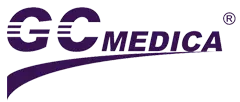-
Laparoscopic & Endoscopic Products
-
Laparoscopic Procedures
- Heated Insufflation Tube
- Laparoscopic Smoke Filter
- High FLow CO2 Laparoscopic Insufflation Filter Tube Set
- Veress Needle
- High Flow Heated Insufflation Tube
- Arthroscopy Irrigation Set
- Disposable Bladeless / Bladed Trocar with Thread / Balloon
- Disposable Wound Protector
- Disposable Height Changeable Wound Protector
- Retrieval Bag
- Laparoscopic Suction Irrigation Set
- Laparoscopic Insufflator
- Endoscopy Care and Accessories
-
Laparoscopic Procedures
- Respiratory & Anesthesia
- Cardiothoracic Surgery
- Gynaecology
-
Urology
- CathVantage™ Portable Hydrophilic Intermittent Catheter
-
Cysto/Bladder Irrigation Set
- M-easy Bladder Irrigation Set
- B-cylind Bladder Irrigation Set
- S-tur Bladder Irrigation Set
- S-uni Bladder Irrigation Set
- B-uro Bladder Irrigation Set
- Premi Bladder Irrigation Set
- J-pump Bladder Irrigation Set
- J-tur Bladder Irrigation Set
- H-pump Bladder Irrigation Set
- Sup-flow Bladder Irrigation Set
- Maple Irrigation Set
- Peony Irrigation Set
- Nelaton Catheter
- Urinary Drainage Bag
- Urinary Drainage Leg Bag
- Enema Kits
- Sitz Bath Kits
- Click Seal Specimen Container
- Silicone Male Catheter
- Spigot Catheter and Adaptor
- Sandalwood Irrigation Set
- Freesia Irrigation Set
- Daffodil Irrigation Set
- Single-Use Digital Flexible Ureteroscope
- Enteral Feeding Products
- Dental
- Fluid Management
- Warming Unit and Warming Blanket
-
Operating Room Necessities
- Nasal and Oral Sucker
- Disposable Medical Equipment Covers
- Magnetic Drape / Magnetic Instrument Mat
- Suction Handle
-
General Surgery
- Perfusion Atomizer System
- Gastric Sump Tube
- Surgical Hand Immobilizer / Lead Hand for Surgery
- Administration Set for Blood
- Ear/Ulcer Syringe
- Bulb Irrigation Syringe
- Toomey Irrigation Syringe
- Mixing Cannula
- Basin Liner/Basin Drape
- Medical Brush
- Sponge Stick
- Suture Retriever
- Needle Counter
- Disposable Calibration Tube
- Heparin Cap
- 100ML Bulb Irrigation Syringe
- Scleral Marker
- Surgical Light Handle
- Mucosal Atomization Device
- Durable Medical Equipment
- Patient Handling System
- PVC-FREE Medical Device
- Emergency
-
Patient Air Transfer Mattress Online WholesaleDec 17 , 2024
-
Cystoscopy Irrigation Set Online Wholesale | GCMEDICADec 17 , 2024
-
Patient Warming Device and Blanket Online wholesaleDec 16 , 2024
-
CathVantage™ Twist Intermittent Catheter | GCMEDICASep 20 , 2024
-
Single-Use Digital Flexible Ureteroscope | GCMEDICASep 20 , 2024
Precautions for the Use of Endotracheal Intubation
Emergency endotracheal intubation technology has become an important measure for the rescue of cardio-pulmonary resuscitation (CPR) and critical patients with respiratory dysfunction. Endotracheal intubation is an important rescue technique which commonly used in emergency work, it is one of the most widely used, most effective and efficient means in respiratory tract management, it is also a basic skill that medical personnel must master, and it plays a crucial role in saving patients' lives and reducing mortality. Endotracheal intubation also can inhale the trachea secretions or foreign bodies without a delay to prevent the foreign bodies into the respiratory tract, keeping respiratory tract unobstructed, making effective artificial or mechanical ventilation. Avoiding hypoxia and making endotracheal intubation timely when there is carbon dioxide retention will be directly related to the success of rescue, safe transport and prognosis of patients.
Ⅰ. The indication of emergency endotracheal intubation
1. The patient suddenly stopped spontaneous breathing.
2. The patients who needs mechanical ventilation due to they cannot meet the requirements of ventilation of the body and oxygen supply.
3. The patients who are unable to clear upper respiratory tract secretions on their own and who has reflux of gastric contents or inhale the bleeding blood at any time by mistake.
4. The patients who have upper respiratory tract injury, stenosis, obstruction, tracheoesophageal fistula and the other symptom to affect normal ventilation.
5. Acute respiratory failure.
6. Central or peripheral respiratory failure. Contraindications for endotracheal intubation.
Ⅱ. Precautions for use of endotracheal intubation
1. Gently insert the catheter to avoid damaging the teeth.
Insert the catheter when the glottis is open to avoid catheter apical to glottis, therefore it can protect the glottis and laryngeal mucosa and it will reduce the occurrence of laryngeal edema.
2. Prevent tooth loss and aspiration
You need to check the patients whether they have dentures and loose teeth before surgery, you have to remove those teeth to avoid the damage or accidentally cause them to fall off and slip into the airway during the endotracheal intubation, causing asphyxia and endangering life.
3. Prevent airbag slippage
Normally the airbag will not slip if it is attached to the catheter. However, if the catheter is separated from the airbag, you should choose the airbag which matches the catheter and tied with silk wire on the catheter to prevent it from slipping into the airway, resulting in serious consequences.
4. Check the position of catheter
Generally, bedside X-ray examination should be performed routinely after endotracheal intubation or mechanical ventilation to determine the position of the catheter
5. Prevention of intubation Accidents
During endotracheal intubation, especially when incitement of epiglottis, the vagus reflex may cause respiratory and cardiac arrest in patients, especially in patients with life-threatening conditions or original severe hypoxia and cardiac insufficiency. Therefore, the medical personnel should explain to the patient's family very clearly and gain their understanding and cooperation before intubation. The medical personnel should monitor the the patient and make sure they have sufficient oxygen during intubation and get emergency aid and equipment ready.

